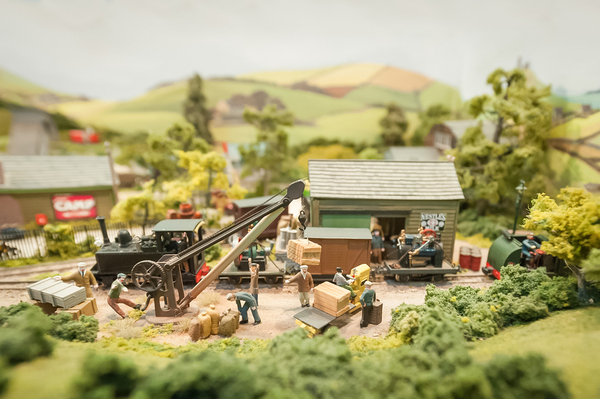Recent Posts
A Matter of Scale: How to Choose the Right Train Set for Your Space
Posted on
When you select the right size train set for the space you have available, you need to consider two major factors: gauge and scale. Scale refers to the size of the model train compared to a real train. An HO scale locomotive, for instance, is 1/87 the size of an actual locomotive. Gauge refers to the width between the two running rails of track. HO products made by Lionel, for example, have a track gauge of 16.5 mm.

The HO scale is the most popular for model trains.
Other considerations when choosing the best size model train for your
needs include the radius the curves have to be in the layout you want to
build, the availability of stock and accessories in the size you're
interested in, and personal preference. Tiny scale model trains, like N
scale, are terrific for limited space setups, but they can be
challenging to deal with for people with imperfect eyesight or limited
manual dexterity. Here's what you should know about three popular
scales: O scale, HO scale, and N scale.
O Scale
O scale model trains are one of the larger sizes, with a scale of 1/48, and it's an extremely popular size. It's small enough that you can make an elaborate layout without taking up excessive space, but large enough that the track, stock, and accessories are easy to work with. The gauge on O scale tracks is 1¼ inches between the outer rails. This size is what most people envision when they think of model trains.
HO Scale
HO scale is the most popular scale, and at 1/87 scale, is just over half the size of O scale model trains. The 16.5 mm gauge is the most popular of all track sizes. HO scale trains are a good choice for people who don't have the room for an O scale layout, but still want tracks, accessories, and stock that's easy to handle for someone with normal eyesight and fine motor coordination.
N Scale
N scale is one of the smaller model train scales, and is scaled at 1/160
of an actual train. Track gauge is 9 mm, but different rail heights are
available, and are expressed in terms of "code." For example, Code 55
rails are 0.055 inches in height. This is important to know if you plan
to mix old and new rolling stock, because some older stock may not run
as well on newer track.

N scale is popular for use in 1:144 scale wargaming simulations.
N scale model trains are small and intricate, yet many hobbyists like them because they are the
best size to use with 1:144 scale miniature wargaming simulations.
Understanding Minimum Curve Radius of Track
Minimum curve radius is the
smallest recommended distance from the center of a curve to the track center.
For O scale model trains, for example, minimum curve radius is around 2
feet. Check your manufacturer's specifications and try to avoid layouts
with curves tighter than the minimum curve radius. When curves are too
tight, rolling stock has a harder time staying on the tracks.
Say you have a model train with a minimum curve radius of 15 inches, and
you want to add a half-circle of track. Your table will need to be at
least 30 inches wide to accommodate sufficient track at the right curve
radius.
Cost is, of course, another consideration. Rarer scales are generally
more expensive, though the popular O scale can become expensive easily. N
scale and HO scale are generally the least expensive, and require less
space. With all scales, however, expensive specialty rolling stock can
cause the cost of your model train layout to increase sharply. Your
available space, your budget, and your ability to handle intricate
manual tasks are three main influences that determine model train size
is right for you.
Now that you know how to choose the right train set for your space,
check out the selection of model trains available at T&K.
 Loading... Please wait...
Loading... Please wait...
